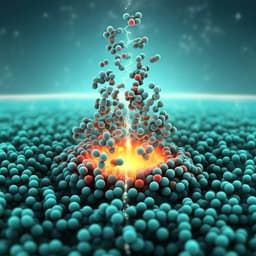
Chemistry
Universal and efficient extraction of lithium for lithium-ion battery recycling using mechanochemistry
O. Dolotko, N. Gehrke, et al.
This paper presents a groundbreaking, acid-free mechanochemical process for recycling lithium from diverse cathode materials, achieving up to 70% recovery of pure Li₂CO₃. Conducted by a team from the Karlsruhe Institute of Technology, this method highlights its potential as a sustainable solution for lithium-ion battery recycling.
~3 min • Beginner • English
Related Publications
Explore these studies to deepen your understanding of the subject.







